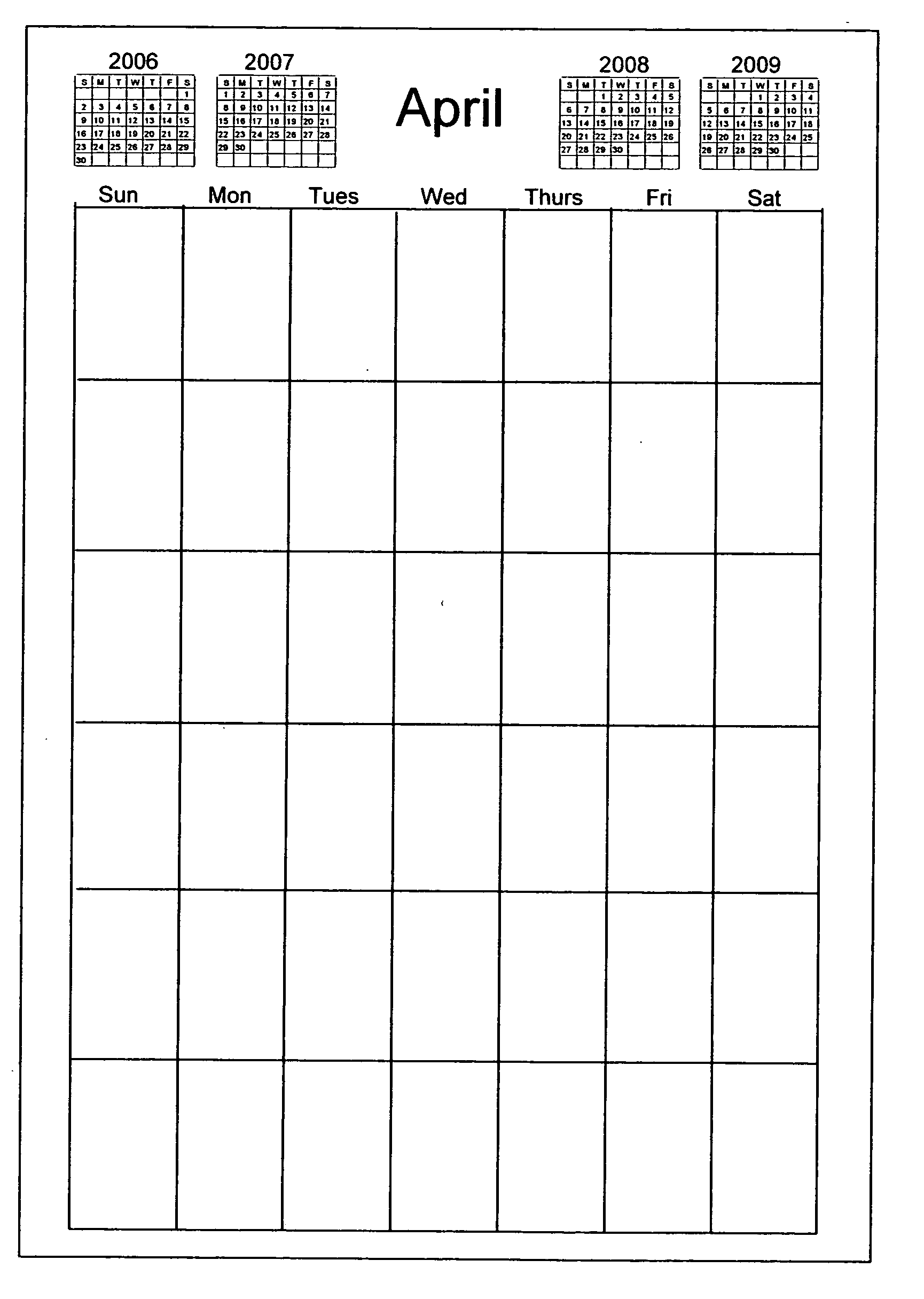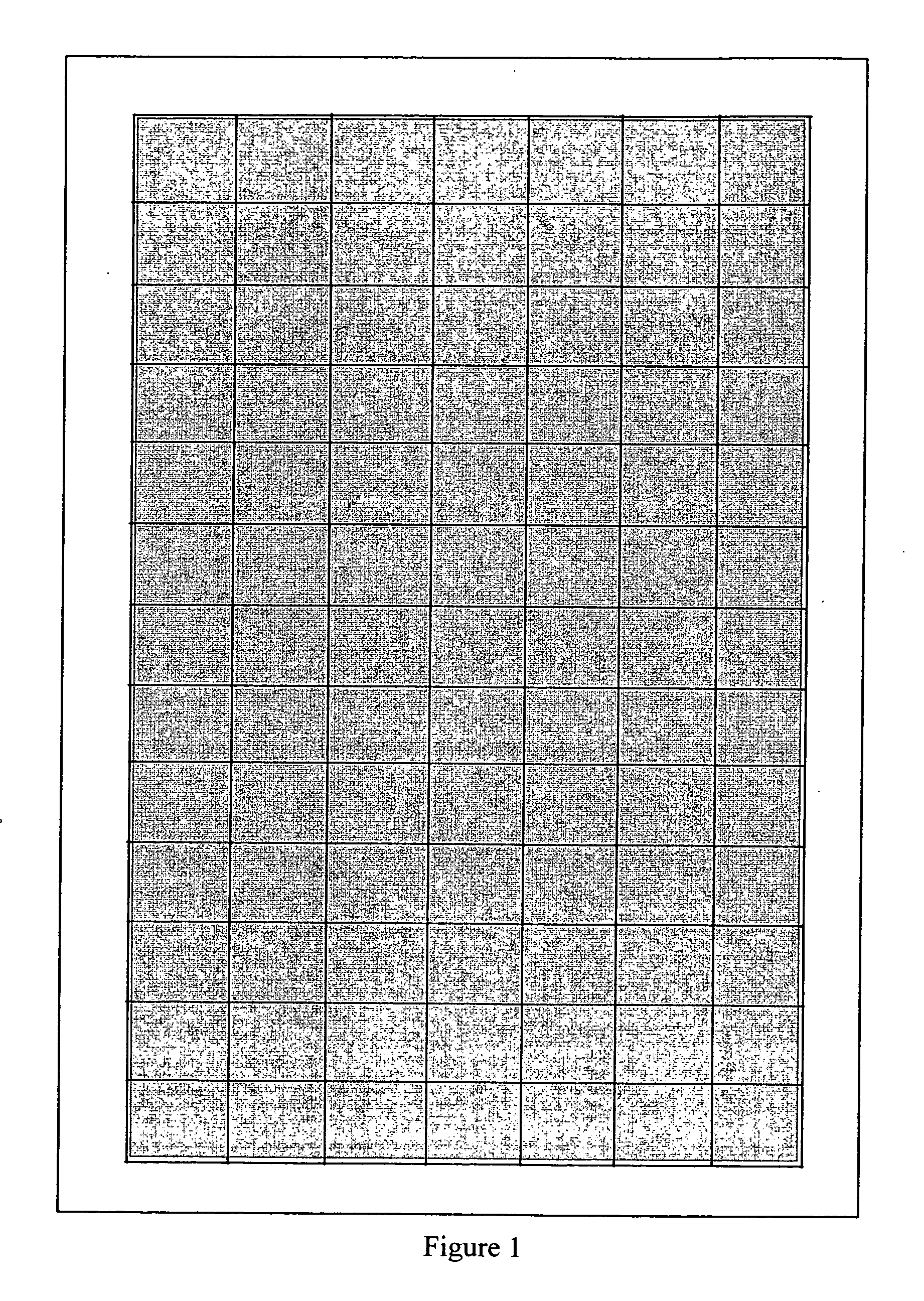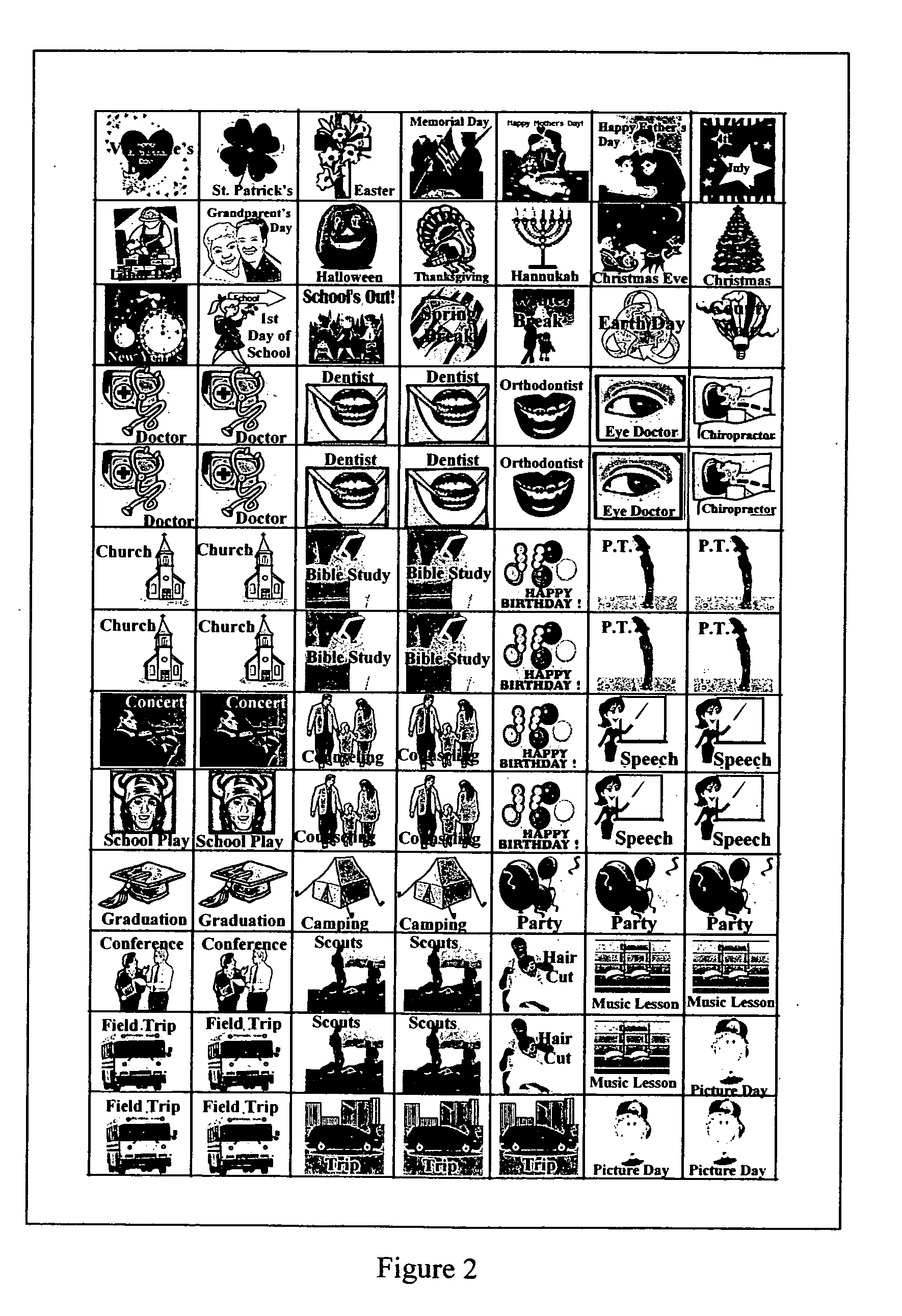Adhesive applique iterative calendar system
- Summary
- Abstract
- Description
- Claims
- Application Information
AI Technical Summary
Benefits of technology
Problems solved by technology
Method used
Image
Examples
Embodiment Construction
[0028] The invention is a calendar system consisting of a 12-month, month-per-page calendar and at least 366 non-permanent adhesive appliqués, half of which are of one color or distinct style and half of which are of another color or another distinct style. In addition, the system contains special occasion and event non-permanent adhesive appliqués to capture dates significant to the minor dependent(s) and therefore important to both co-parents. This calendar system invention can be used alone or as a complement within a planner or similar publication.
[0029] Specification details for calendar pages include the following: [0030] Month-at-a-glance calendar pages are to be 8½″+ / −2″×5½″+ / −1″[0031] Calendar pages are to be printed on paper or rigid plastic film. If paper is used, the paper is to have surface properties and adequate stiffness such that the paper will not delaminate when the non-permanent adhesive appliqués are applied and subsequently removed. [0032] Each rectangular box...
PUM
 Login to View More
Login to View More Abstract
Description
Claims
Application Information
 Login to View More
Login to View More - R&D
- Intellectual Property
- Life Sciences
- Materials
- Tech Scout
- Unparalleled Data Quality
- Higher Quality Content
- 60% Fewer Hallucinations
Browse by: Latest US Patents, China's latest patents, Technical Efficacy Thesaurus, Application Domain, Technology Topic, Popular Technical Reports.
© 2025 PatSnap. All rights reserved.Legal|Privacy policy|Modern Slavery Act Transparency Statement|Sitemap|About US| Contact US: help@patsnap.com



